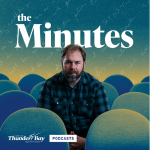The Thunder Bay Coalition to End Human Trafficking and Community Safety & Well-Being Thunder Bay will host a free Human Trafficking Information Session for parents and caregivers today, Feb. 22, to mark the annual National Human Trafficking Awareness Day.
The session, which takes place from 6:30 pm until 8:30 pm at the Kinsmen Centre, 609 James St. N., includes information about what human trafficking is, risks and red flags, and how to talk to young people about this issue. Information from community service providers and other resources available in our community to support young people will also be available.
“Education will be our greatest asset in keeping young people safe from online exploitation and the risk of human trafficking,” said Kris Carlson, Co-Chair, Thunder Bay Coalition to End Human Trafficking.
“Giving parents and caregivers the skills to identify possible risk factors, and how to effectively engage young people in these discussions is a priority. Providing a face to face session with community resources for parents and caregivers, as well as young people in our community, will help break down barriers for those who need help.”
Thunder Bay is one of the top six hubs for human trafficking in Ontario. The average age for recruitment is 13 years old.
National Human Trafficking Awareness Day aims to bring awareness as to how individuals are exploited through labour trafficking and sex trafficking in Canada. Recognizing this day is a step toward combatting this form of modern-day slavery, and supporting actions to end this abuse.
Human trafficking – especially sex trafficking – involves the recruitment, transportation, harbouring and/or exercising control, direction or influence over the movements of a person, for the purpose of exploitation.
Sex trafficking is the most common form of human trafficking in Ontario. This is a gender-based crime that predominantly impacts Canadian women and girls. Certain groups are disproportionally vulnerable, including Indigenous women and girls, migrants and new immigrants, 2SLGBTIQ+ persons, persons living with disabilities, children in the child welfare system, at-risk youth, and those who are socially or economically disadvantaged.
Contact Us









